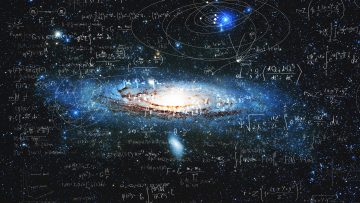Black holes are among the most intriguing phenomena in our universe. From the pictures of our galaxy’s black hole, to attempts to learn more about how they form and even what happens when two black holes merge, scientists have pushed our knowledge of these celestial entities further than ever. Now, though, NASA has actually watched a black hole eat a star.
To get a good view of the event, NASA used multiple of its space telescopes to observe the black hole as it ate the star. The unlucky star wandered too close to the black hole, which is located roughly 250 million light-years away from Earth. NASA says this was the fifth-closest example of a black hole decimating a star we’ve observed.
To break down how these kinds of deaths happen, NASA shared an embedded video of how the star begins to rupture and flatten as it approaches the black hole. Then, as it gets closer, the star is quite literally ripped apart and sucked into the black hole itself. This process is formally called a tidal disruption event.
Now, NASA is hoping to learn more about these events by digging deeper into this one. By learning more about what happens when a black hole eats a star, we can learn more about the interactions that black holes have when other celestial entities come too close. It’s an intriguing study that should yield some even more intriguing results in the long run.
Additionally, because NASA had so many telescopes focused on this particular event, there is more than enough data for astronomers to build off of as they study it more in-depth. NASA’s Jet Propulsion Laboratory says that a team looking into these tidal disruption events has formed, and hopefully, we’ll see more from that in the coming months and years.
For now, we can at least watch the animations that people have created to simulate these kinds of events, which truly are both intriguing and terrifying at the same time.








